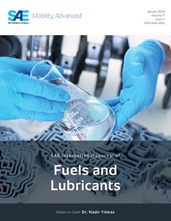In the last ten years, the number of natural gas vehicles worldwide has grown rapidly with the biggest contribution coming from the Asia-Pacific and Latin America regions. As natural gas is the cleanest fossil fuel, the exhaust emissions from natural gas spark ignition vehicles are lower than those of gasoline powered vehicles. Moreover, natural gas is less affected by price fluctuations and its resources are more evenly widespread over the globe than to oil. However, as natural gas vehicles are usually bi-fuel gasoline and natural gas, the excellent knock resistant characteristics of natural gas cannot be completely exploited.
This paper shows the results of an experimental activity performed on a passenger car fuelled alternatively by gasoline and compressed natural gas (CNG). The vehicle has been tested on a chassis dynamometer over standard (NEDC) and real driving cycles (Artemis CADC), allowing to investigate a wide range of operating conditions. Cylinder pressure has been measured by means of a spark plug with an integrated pressure transducer. By processing the acquired signal, a combustion analysis has been performed allowing the evaluation of the burning rate affected by fuels properties. Furthermore, regulated and unregulated exhaust emissions have been measured and fuel consumption has been calculated by means of carbon balance method to evaluate engine average efficiency over driving cycles.
CO and HC emissions were higher for CNG respect to gasoline over the type approval driving cycle, mainly because of cold start contribution. Over the much dynamic real-world driving cycles, gasoline showed always higher CO emissions due to the rich combustion operated by engine control during transients. NOx emissions were always higher with gasoline fuelled vehicle. Using the gaseous fuel, a consistent increase in engine efficiency was noticed, particularly evident over Artemis driving cycles. Particulate mass emissions were generally very low and close to background levels. Total particle number relative to gasoline is higher than that of natural gas, exceeding the Euro 5b standard limit currently prescribed only for diesel passenger cars. The slower combustion rate of natural gas respect to gasoline has not been compensated by appropriate ignition timing. A different ignition timing setup for the natural gas operation could give appreciable engine performance improvement.
